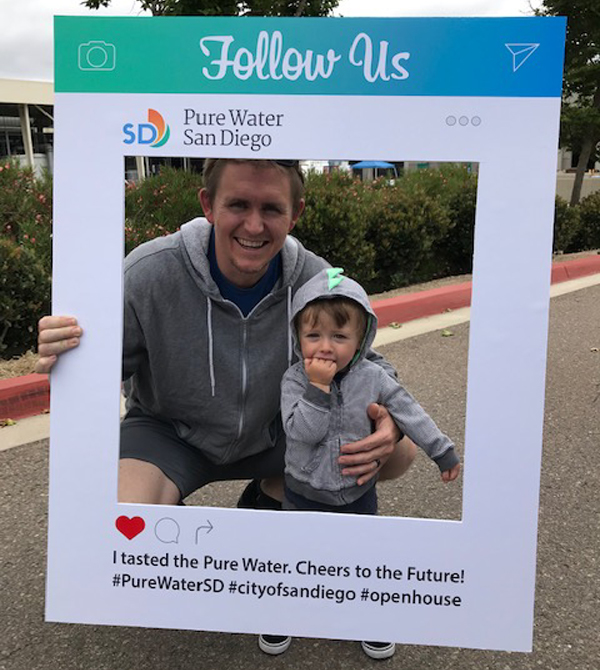Pure Water Day Delivers Pure Family Fun
The City of San Diego held its third ‘Pure Water Day’ Open House at the North City Water Reclamation Plant in the Miramar area, inviting residents to enjoy family-friendly activities and learn about the upcoming project construction.

More than 300 people took tours of the five-step water purification process at the demonstration facilities. Photo: City of San Diego
More than 300 people took tours of the five-step water purification process at the Pure Water Demonstration Facility and tasted the purified water produced at the facility following their tour. Residents of University City, Clairemont, and Scripps Ranch learned about Phase 1 of construction scheduled in their neighborhoods.
“We are excited to once again open our doors to the community, and share how we will deliver a new, safe, local source of drinking water for San Diego,” said John Helminski, assistant director of the San Diego Public Utilities Department.

Attendees enjoyed a variety of family-friendly activities at the third annual Pure Water Day. Photo: City of San Diego
Pure Water first phase starts construction later this year
Pure Water San Diego is a multi-year phased program using proven technology to clean recycled water to produce safe, high-quality potable water. After construction is completed, the Pure Water Program is expected to provide one-third of the City of San Diego’s water supply by 2035.
The first phase of construction includes the North City Pure Water Facility, new pump stations and pipelines, and upgrades to existing facilities. The North City Pure Water Facility will be constructed on City of San Diego owned property east of Interstate 805 and north of Eastgate Mall, across from the existing North City Water Reclamation Plant.
Purified water produced at the completed plant will be delivered to the Miramar Reservoir, blended with the City of San Diego’s imported and local water sources, and treated again at the existing Miramar Drinking Water Treatment Plant. After this process, the water will be distributed to customers. Construction of Phase 1 is expected to begin later this year and is scheduled for completion in 2023.



